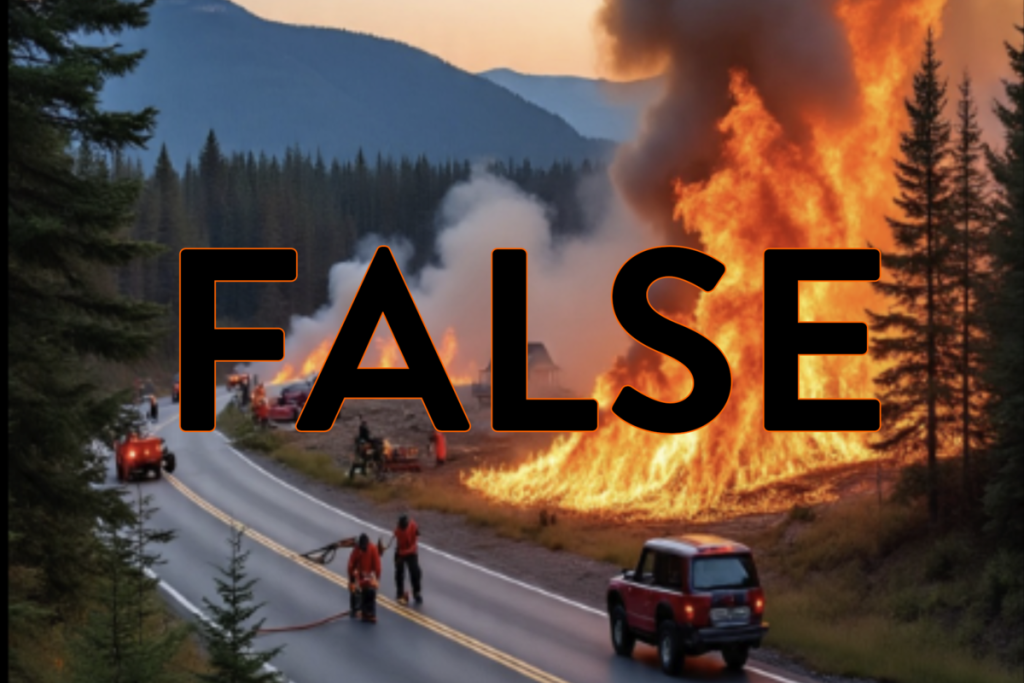AI-Generated Wildfire Images Fuel Misinformation Crisis on Social Media
The devastating wildfires ravaging British Columbia have become a breeding ground for a new form of misinformation: AI-generated images. These fabricated visuals, often depicting dramatic scenes of infernos and firefighting efforts, are rapidly spreading across social media platforms, blurring the lines between reality and fiction and exacerbating public anxieties. The proliferation of these images has raised alarms among experts, who warn of a “supercharged” era of misinformation with potentially dangerous real-world consequences.
One recent incident highlights the ease with which these AI-generated images can deceive. Greg Witt, president of Osprey Silviculture Operations, inadvertently shared several fabricated wildfire images on his company’s Facebook page, believing them to be genuine. The incident quickly spiralled, drawing criticism and highlighting the rapid spread of false information, especially during times of crisis. The BC Wildfire Service promptly issued a warning about the circulating AI images, emphasizing their inaccuracy and the potential for misinformation to spread rapidly during periods of heightened fear and anxiety.
Unfortunately, Witt’s experience isn’t isolated. A Business in Vancouver (BIV) investigation uncovered more than half a dozen AI-generated images circulating on social media platforms, falsely depicting BC wildfires. These images ranged from dramatic depictions of firefighting aircraft battling blazes under lightning-filled skies to more subtle, and therefore harder to detect, fabrications. The ease with which these images can be created and disseminated, combined with the emotional nature of wildfires, creates a perfect storm for misinformation to spread.
Experts warn that this phenomenon is not unique to BC and represents a growing global trend. The emergence of readily available AI image generation tools has drastically lowered the bar for creating convincing yet false visuals. This has supercharged the spread of misinformation, especially during climate emergencies like wildfires, where public anxiety is already high. Last year’s Flame Wars report, which analyzed misinformation during Canada’s devastating 2023 wildfire season, highlighted the proliferation of conspiracy theories and false claims regarding the fires. Now, AI-generated images add a new layer of complexity and believability to this existing problem.
The issue is further complicated by the evolving landscape of social media platforms. Meta’s recent decision to end its fact-checking program in the U.S., replaced by a community-driven “notes” system, raises concerns about the capacity to effectively combat the spread of misinformation. While this change doesn’t yet apply to Canada, Meta’s move to ease restrictions on incendiary topics globally, coupled with its stated commitment to amplifying authoritative information during crises, presents a confusing and potentially contradictory approach. The company’s silence regarding specific measures to address AI-generated images only amplifies these concerns.
The BC Wildfire Service has acknowledged the growing challenge posed by online misinformation and has shifted its communication strategy away from social media updates, partly due to algorithmic issues and low engagement. However, the underlying problem remains: social media platforms continue to be fertile ground for the rapid and largely unchecked dissemination of AI-generated images. The lack of clear labeling or identification of these fabricated visuals leaves individuals to discern their authenticity, a difficult task even for the discerning eye. This, coupled with the decline of local journalism and Meta’s withdrawal of news content from its platforms, further erodes trust in official information channels, creating a vacuum readily filled by misinformation.
The real-world consequences of this misinformation are becoming increasingly apparent. Documented cases of individuals refusing evacuations or interfering with firefighting efforts due to misinformation underscore the gravity of the situation. Witt’s personal experience, with family members directly affected by the Wesley Ridge fire and a crew member assaulted during the 2023 Shuswap fires, vividly illustrates the tangible dangers linked to the spread of false information. As the lines between reality and fiction continue to blur online, the need for effective strategies to combat AI-generated misinformation becomes increasingly urgent. This includes increased platform responsibility, media literacy initiatives, and robust fact-checking mechanisms to ensure that accurate information reaches the public during times of crisis.


